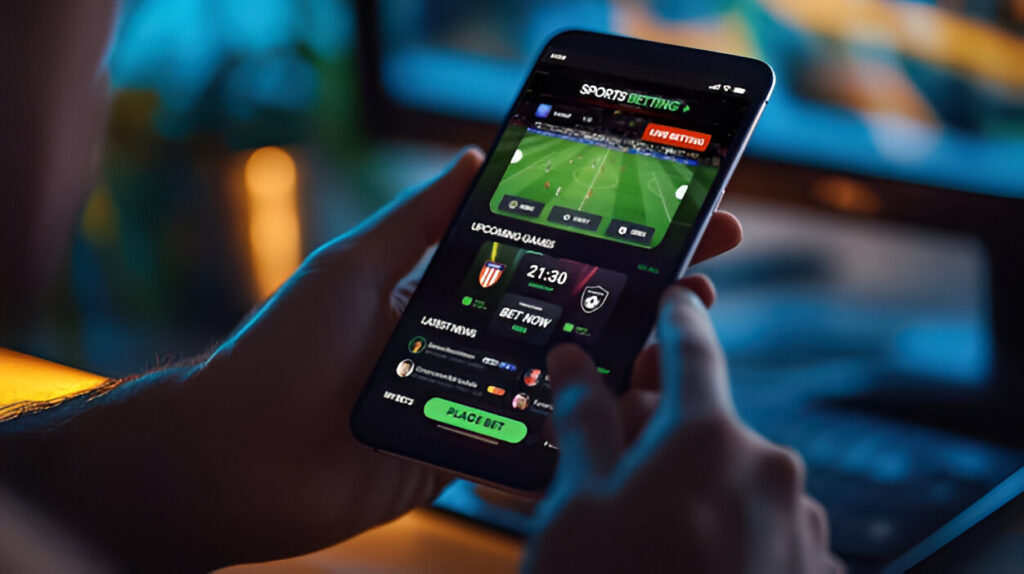
Imagine you’re at a sports arena. You’re watching the game, checking your phone, and contemplating a bet. You want to place it from your seat, then maybe tweak it later at home. Or—you’re browsing on your laptop at work, then walk into a retail shop just before kickoff. You expect your bets and preferences to sync smoothly across all interfaces. That’s what omnichannel sports betting is all about: a frictionless, connected journey across web, mobile, and retail.
In this post, we’ll explore what makes an omnichannel sports betting experience strong, why it matters, and how a reliable sports betting software development company and sports betting API provider can help you pull it off.
Why Omnichannel Matters
Consumers don’t live in silos. They switch devices, environments, and needs fluidly. For sports bettors, that often means:
- Web surfing during breaks – researching stats, player form, odds.
- Mobile betting anytime, anywhere – during commutes or in-game action.
- Retail visits for in-person support – cashing out, getting quick tips, or funding an account.
A fragmented system—where each channel has different odds, interfaces, or bet histories—dulls engagement and frustrates customers. If I place a bet on my phone, I want to see it at the retail kiosk. If I research a future game on desktop, I expect it to be in my mobile slip. Losing that continuity invites churn.
Omnichannel sports betting is no longer a luxury—it’s table stakes in a competitive market.
Foundations of a Consistent Omnichannel Experience
To nail omnichannel, prioritize these core elements:
1. Unified Account & Wallet
Every channel must access the same user data. That means one wallet—funds added via mobile should show up at the counter; bets placed at a retail kiosk should reflect in the web history.
2. Shared Bet Slip
If I start a cumulative bet on mobile, it should auto-appear on desktop and the shop terminal. Live updates and seamless transitions foster trust and immersion.
3. Synchronized Odds & Markets
Dynamic in-play odds update across channels instantly—no undercuts, second-rate lines, or mismatches. Live events, odds pushes, and auto-settlements must roll out synchronously.
4. Cross-Channel Personalization
I set my interface colors on mobile? Expect them on desktop. I favor soccer markets—deliver them in-store. Profile info, preferences, supported sports—maintained everywhere.
5. Consistent UX/UI with Local Adaptations
Despite a unified feel, each platform has its strengths. Desktop: more data. Retail: large fonts, quick touch navigation. Mobile: thumb-friendly design, easy bet stacking.
6. Holistic Customer Support
Users should get help wherever they are—chat on mobile, on-site clerks in retail, email or voice via web. Support must be aware of bets placed across any channel.
How to Build It: Key Layers & Tech
Core Platform and Infrastructure
At the heart of omnichannel is a scalable, resilient platform. A robust sports betting software development company is your partner here. Their role includes:
- Centralized betting engine with transaction logging
- Unified wallet and database
- User authentication and session control
- Security, compliance, and performance tuning
Choosing someone with real-world cross-platform experience is vital. Integrations, scaling spikes, cashout rules—expertise matters.
Sports Data & Odds Aggregation
Your backbone is real-time sports data—scores, stats, markets, live prices, line shifts. A high-quality sports betting API provider becomes essential. They feed:
- Feed handlers: Pushing data for 100+ leagues
- Odds updates: Instant in-play moves
- Streaming support: Live scores, player stats
- Risk control signals and triggers
You plug into that API and surface it consistently across all platforms.
Front-End Channels
Here’s where omnichannel meets the user:
- Web (Desktop/Browser)
- Deep analytics (charts, tables), bet floors, soft releases
- Offer bet recommendations, history, deposits, cashouts
- Live streams, embedded content, personalization modules
- Mobile (iOS/Android/PWA)
- Geo-locked, thumb-accessible, lightweight UI
- One-Tap betting, quick payments (digital wallets, UPI, cards)
- Push notifications for odds shifts, bet status, match events
- Retail/Terminal Software
- User identification (QR, UID, SN orders)
- Large, clear odds display, live odds boards
- Cash handling, receipt printing, payouts
- Kiosk or clerk-assisted mode
That’s three different front-end UIs—on top of one backend.
Middleware & Microservices
The days of monolithic systems are waning. A microservices-architecture gives you:
- Bet service, wallet service, risk engine, settlement service, notification service, sessions service (web, mobile device, kiosk)
- Each scales independently under load
- Failovers keep core operations alive
- CI/CD pipelines handle updates to channels with zero outages
This architecture allows your team to launch a new UI or feature without blowing up the whole platform.
Synchronization & Messaging
Cross-channel consistency requires instant messaging:
- Bet flow: UI → Bet engine → Wallet → All client instances informed
- Odds flow: Data feed → Odds engine → Attached UIs
- Settlement flow: Match finishes → engine determines result → Wallet adjusts → Client notifies
Tech choices like Kafka, Redis, or RabbitMQ help keep everything in sync.
UX Best Practices Across Platforms
A cohesive experience isn’t just tech—it’s how people feel:
Clear Navigation
Mobile-friendly bet, account, help tabs. Retail terminals: big buttons, clear layouts. Desktop: sidebars, research dropdowns.
Visual Consistency
Same branding elements—colors, fonts, icons—reinforce identity and trust.
Seamless Onboarding
If I register on mobile, I can walk into the shop and hand over ID without friction. Or scan a QR to fetch my profile—carry that experience through.
Smart Notifications
I place a bet via desktop and get push or SMS confirmations. If odds move, a tap lands me in mobile; retail notifications appear on in-shop displays or staff consoles.
Support That Follows You
Ticket created on mobile? Clerks can see that in-store. Web chat continued by email. You never get passed around due to channel gaps.
Data, Analytics & Personalization
Omnichannel gives you powerful data on user journeys:
- Where users begin—web or mobile?
- When they shift channels
- What triggers bet placement?
- Do players cash out in-shop or by mobile?
Analyzing these trends helps:
- Tailor offers and promotions channel-wise
- Optimize bet slip path for quicker completions
- Improve live data-streaming performance where needed
Data maturity is a huge competitive advantage when you crack omnichannel behaviors.
Risk, Security & Regulatory Considerations
With shared wallets and telescoping experiences come risks:
Regulatory Compliance
Geo-location matters. Different markets require different odds delays, payout limits, or licensing. Retail locations may have different legal constraints than online.
Payments & KYC
Digital wallets, cash pay-ins, click-to-pay—all of it has to meet AML/KYC rules. Bridging retail cash with digital wallets takes careful API orchestration.
Security
Token renewal, session timeout, fraud detection—these apply to all environments. Retail terminals often have fewer rep protection, so terminal-level screensavers, inactivity locks, and session flags matter.
Responsible Gambling
Same rules across channels: real-time self-exclusion, cooler periods, loss limits. Use your cross-channel platform to track fatigue and intervene as needed.
Testing, Roll-Out & Maintenance
Omnichannel systems are complex. Here’s how to keep them stable:
Test Environments
Have dev/stage/stress environments that mirror production scale. Simulated data feed and fake wallet for full-channel tests.
Feature Flagging
Need to trial new odds boards or mobile UI? Feature flags let you release and rollback fast.
Uptime & Monitoring
Live dashboards monitoring all channels; automated alerts for odd mismatches, caching issues, or payment failures.
Hot Fixes
Infrastructure that supports auto-scaling and microservices lets you fix bugs without customer downtime.
Marketing, Engagement & Retention
Omnichannel excellence is a marketing win:
Cross-channel Promotion
Offer mobile-first promos redeemable in-store or online. Scan QR at retail to claim mobile-free bets.
Behavior-Based Offers
If I regularly bet on cricket via mobile but not retail, nudge me with an in-store bonus or special terminal UX tweak.
Loyalty Across Channels
Loyalty points that sync across web, mobile, and in-shop. Tiered systems showing earnings visually everywhere.
Channel Analytics
Discover where activation hangs up. You can close loops—say, simplify mobile signup if too many drop out.
Choosing the Right Partners
Building omnichannel isn’t a DIY job sports betting software development company and sports betting API provider are key partners. Here’s why they matter:
- They deliver betting engines and APIs that support all channels from Day One.
- They ensure data feeds, risk engines, and user services are designed for synchronous performance.
- They bring experience handling payment integrations, compliance, and geo-based routing.
- They provide real-time analytics and support tools to manage channel-specific offerings.
- They help optimize feature rollouts, recovery planning, and live support optimization.
You want experience in all three environments—and a shared roadmap that bakes in omnichannel from the start.
Conclusion
An omnichannel sports betting experience is more than a nice-to-have—it’s how modern bettors interact with sports in a digital world. Whether it’s placing a live bet from your phone, checking odds on desktop, or walking into a retail shop to finalize your wager, consistency, continuity, and delight define success.
To make it work, you need:
- A strong, unified backend
- Joint data and wallet support
- Channel-specific designs optimized for experience
- Real-time sync and messaging
- Secure, regulated flows
- Rapid testing and deployment
- Intelligent analytics
- Common branding and behavior continuity
Most importantly, partnering with an experienced sports betting software development company and a trusted sports betting API provider ensures your omnichannel journey isn’t a piecemeal retrofit—it’s built thoughtfully from Day One.



